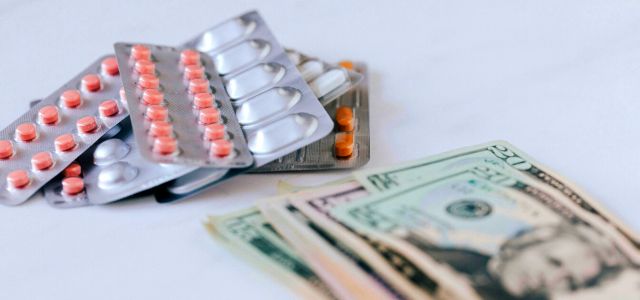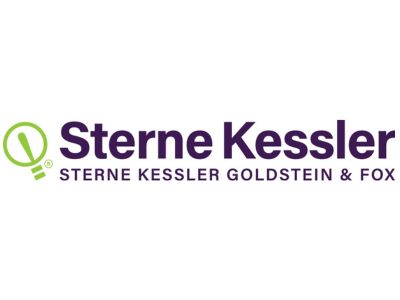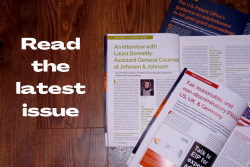The National Institute of Standards and Technology (NIST) recently published a Draft Interagency Guidance Framework for Considering the Exercise of March-In Rights (framework). The framework instructs federal agencies to consider “unreasonable pricing” as a factor in determining whether to exercise Bayh-Dole march-in rights. March-in rights allow a federal agency to license, or compel the patent owner to license, a patent directed to a government-funded invention if the invention is not made available to the public under “reasonable terms.” The explicit mention of reasonable pricing in the draft framework reverses a policy followed by the National Institutes of Health (NIH (see Treasure et al., Milbank Q. 93(4) 761-787 (2015)). Currently, “reasonable price” is not defined rather the framework presents a multi-factor analysis that weaves pricing into existing statutory factors including practical application, health and safety needs, and public use (see 35 USC 203).
Over 50,000 comments were submitted during the Request for Information period from December 2023 to February 2024. The comments encompass a wide range of viewpoints and reflect a long-standing dichotomy of opinion on the government’s role in controlling drug prices. While opponents suggest that the framework will chill competition and innovation, proponents argue that the framework is a useful tool and some comments argue it falls short in addressing the high cost of new medical products.
Some critics of the framework – and march-in rights generally – state that Bayh-Dole was intended to place the fruits of government-funded research into the hands of private actors who best understand the market and how to convert inventions into commercially available products. The framework will erode this intention by disincentivizing the private sector, especially large investors, from licensing and investing in further development of technology resulting from federally funded research. For example, the Association of American Universities commented that the framework will “increase uncertainty and ambiguity,” which will have a “detrimental and destabilizing effect on university and medical school technology transfer efforts and planning.”
We expect that the framework, particularly the “unreasonable pricing” aspect, will likely have detrimental consequences, especially in the early-stage drug development ecosystem. Non-profit research entities, early discovery stage start-ups, and mid-sized companies either raise funds or look for partners to complete the time-consuming and expensive activities needed to develop and commercialize a new product. These entities often own or license patents that are subject to Bayh-Dole obligations. Patent exclusivity and clear title are key factors in choosing which opportunities merit investment and further development. Lowering the threshold for march-in rights creates greater uncertainty as to both clear title and exclusivity. As a result, we predict reduced valuations related to investments and deals where the key patents relate to government-funded inventions.
This is not the first effort to try to impact the prices of federally funded technology. From 1991-1995, NIH required reasonable pricing clauses in CRADA agreements. The biomedical industry responded with a substantial decrease in NIH research collaborations. In late 1995, NIH removed this clause after determining “that companies were avoiding collaborations with the NIH because of the pricing clause.” We similarly suspect that if the federal government promotes march-in rights to control drug pricing, investment in Bayh-Dole-encumbered technology will decrease.
Notably, the framework, if implemented, only applies to government-funded inventions. Thus, even if first-generation technology funded by federal grants is subject to Bayh-Dole, patents covering further developments of the technology that are free from government funding are not subject to march-in rights. Accordingly, building a diverse patent portfolio covering a product candidate can reduce the impact of the government’s right to march in on a subset of patent(s).
The framework, if adopted, will reduce the bargaining position of smaller start-ups and universities, which often rely on federal research grants and agreements. The resulting patent applications will be subject to Bayh-Dole and will be subject to discounting of value during licensing or partnering negotiations. Thus, contrary to NIST’s express intent, the framework is unlikely to substantially lower prices for new drug products. However, the number of clinical drug candidate opportunities will likely be reduced as fewer early-stage projects are funded due to lower valuations and higher risks related to the lack of clear titles and exclusivity for key patents.

Written by Madeleine Bond
Associate, Sterne Kessler

Written by John Covert
Director, Sterne Kessler

Written by Bonnie Nannenga-Combs
Director, Sterne Kessler
You may also like…
Pravin Anand conferred with the APAA Enduring Impact Award
Pre-eminent IP Lawyer and Managing Partner of Anand and Anand, Mr Pravin Anand, has been conferred with the...
The quiet power of confidentiality clubs in SEP litigation
In standard essential patent (SEP) disputes, especially those involving FRAND (Fair, Reasonable, and...
A $10 million patent win reduced to a $1 lesson in damages
In a decision that will resonate as a stark warning to patent litigants, the US Court of Appeals for the Federal...
Contact us to write for out Newsletter














